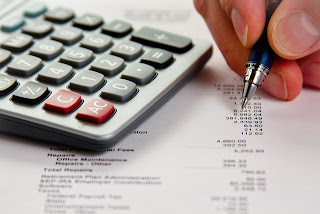Good Articles to Share
How To Calculate Portfolio Return? - Bursa D
Tan KW
Publish date: Thu, 02 Jan 2014, 10:55 AM
Thursday, 2 January 2014
Year 2013 has passed... Happy New Year 2014 to all.
When I try to calculate my overall portfolio return for year 2013 (Jul-Dec 2013), I face some problems.
As mentioned in previous posts in this blog, I only started to get really serious with stock market investment from June 2013, and I only started to calculate gain on monthly basis from October 2013.
Prior to June 2013, I have sold all the stocks and only left one Tambun behind. As the gain & loss of previous transactions almost break even, I'll consider July 2013 as the start of my portfolio for 2013.
However, this will not reflect the true performance of the portfolio for year 2013 as Tambun, which carries a high percentage in the portfolio, was bought and accumulated since 2012. All other stocks were bought after June 2013 though.
Another problem is, I bought and sold shares quite a number of times since the start of July 2013. How can I calculate the true return of my portfolio accurately?
For example,
Mr Y put in RM10,000 in his portfolio on the 1st of Jan 2013 and do nothing after that. In the end of the year (31 Dec 2013), his portfolio value increases to RM15,000. His portfolio return will be 50%. This is straight forward.
If Mr Y adds RM5,000 to buy another stock on 1st Dec 2013 and its share price remain the same until end of Dec 2013, what will be his overall return for year 2013?
In this case, his total investment in year 2013 will be RM15,000 (initial RM10,000 + later RM5,000), and his portfolio value in the end of Dec 2013 will be RM20,000 (value from initial RM15,000 + value from later RM5,000). Does the return of his portfolio calculated as:
Total gain in 2013 divided by total investment in 2013, ie:
[RM20,000 - RM15,000] / RM15,000 = 33.3% ??
I don't think it is a true reflection of the performance of this portfolio as the additional investment made in December does not have much time to generate return.
For the denominator of RM15,000 in this calculation, RM10,000 of it generates return for 12 months, while RM5,000 of it only generates return for 1 month. This has unfairly dragged down the overall portfolio performance from 50% to 33%.
Lets study another scenario,
Mr B bought 10,000 shares of stock Z at RM1.00 per share on 1st Jan 2013. His initial investment will be RM10,000.
He sold 2,000 shares of stock Z on 1st June 2013 at the price of RM1.50 per share, with a net gain of RM1,000 (excluding transaction cost).
In the end of Dec 2013, stock Z closes at RM2.00 per share. What will be Mr B's overall return in year 2013?
[Unrealized gain + realized gain] divided by initial capital value, ie:
[RM2 - RM1] x 8000 shares + [RM1.50 - RM1] x 2000 shares, divided by RM10,000 = 90% ??
OR
[Unrealized gain + realized gain] divided by end capital value, ie:
[RM2 - RM1] x 8000 shares + [RM1.50 - RM1] x 2000 shares, divided by RM8,000 = 112.5% ??
This calculation seems reasonable but not quite right. Though Mr B initial investment is RM10,000 in Jan 2013, it has been reduced to RM8,000 from June 2013 onward after 2,000 shares have been sold. In other words, the share price gain from June to Dec 2013 (from RM1.50 to RM2.00) is generated from only RM8,000 capital, not RM10,000 as used in the denominator of the calculation above.
If we change the denominator to RM8,000, which is the capital remaining in the end of 2013, the same question still arises as the return from Jan to June 2013 is generated from RM10,000, not RM8,000.
In real life, most investors buy and sell shares multiple times during a year, and have a net increase or decrease from their initial capital. This makes the calculation of portfolio return even more complicated.
I try to search online to find out the way to calculate portfolio return more accurately and find one method using approximation equation. The formula is:
Ending value - 0.5(net changes)
---------------------------------------------- - 1 x100%
Beginning value + 0.5(net changes)
Net changes can be net addition or net withdrawal from Jan 13 to Dec 13.
From the example of Mr B above, beginning value is RM10,000, ending value is RM16,000 (8,000 shares x RM2). Net changes will be net withdrawal of RM3,000, thus -3,000 (2,000 shares x RM1.50).
16,000 - 0.5(-3,000)
----------------------------- - 1 x100% = 105.9%
10,000 + 0.5(-3,000)
Thus, Mr B's portfolio return for year 2013 is 105.9%.
The basis of the formula is actually quite simple, average (50%) of the withdrawal is added into the beginning value and subtracted from the ending value, and vice versa.
For Mr Y's case in earlier example, his portfolio return should be:
20,000 - 0.5(5,000)
--------------------------- - 1 x 100% = 40%
10,000 + 0.5(5,000)
This is an approximation equation and will not be 100% precise. Like statistics, the accuracy will improve if the additions and withdrawals are done evenly and the amounts are not large compared to total portfolio value.
This formula includes both realized and unrealized gain for a period of time. To include the dividend gain, I will add it into the ending value to generate my overall return for year 2013, which is 60.2% (Jul - Dec 2013).
I'm not sure whether this is the correct & simplest way to calculate overall portfolio return for share investment. If anyone has any recommendation or objection, please feel free to comment.
More articles on Good Articles to Share
'DANGEROUS EVENT': New warning over Big Tech censoring information to American people
Created by Tan KW | Aug 16, 2024
The Fed's September cut will have a psychological effect: The Conference Board's Dana Peterson
Created by Tan KW | Aug 16, 2024
Kamala Harris isn't encumbered by a deep ideological anchor, says Politico's Jonathan Martin
Created by Tan KW | Aug 16, 2024
It's a long shot for anyone to outbid Skydance for Paramount, says Rosenblatt's Barton Crockett
Created by Tan KW | Aug 16, 2024
Kamala Harris prepares to lead Democratic convention with strong tech ties
Created by Tan KW | Aug 16, 2024
Lawmakers elect Paetongtarn Shinawatra as Thailand's next prime minister
Created by Tan KW | Aug 16, 2024
Mahabalipuram: What To Do In Tamil Nadu’s Secret Surfer’s Paradise! | A Street Like This
Created by Tan KW | Aug 16, 2024












.png)
.png)










NOBY
I found this formula to be simple and useful
http://www.oldschoolvalue.com/blog/investment-tools/calculate-xirr-annualized-returns/
2015-02-28 23:05